DISCUSSION
IP is the second most frequent benign tumor of the frontal sinus [
6]. As local extension and bony remodeling with expansion into adjacent tissue are typical characteristics of IP, accurate excision of the IP and mucoperiosteal dissection of the attachment site are important principles for successful surgery [
4,
7]. For microscopic digitation extending into underlying bone, the bone underneath the attachment site should be removed or drilled to avoid recurrence [
1,
2,
6].
The importance of eradication at the attachment site and complete excision emphasizes the need for preoperative radiologic and endoscopic evaluation to analyze the origin and extent of the IP [
1]. With high-resolution CT, the site of attachment can be identified by focal bony thickening [
5]. MRI has even greater value in assessing tumor extent and can distinguish the border between mucus retention and the tumor [
5].
To date, no definitive guideline exists for the best technique to remove an IP of the frontal sinus, but Pietrobon et al. [
1] suggested a practical algorithm for the surgical management of frontal sinus IP based on a retrospective review of 47 patients. Generally, the authors preferred an endonasal endoscopic approach, if possible, for lower morbidity and a shorter hospitalization time. However, in cases where an exclusive endonasal endoscopic approach was contraindicated because incomplete resection could result, an external approach such as osteoplastic flap or endoscopic frontal trephination was considered [
1]. The contraindications included: 1) a small anteroposterior diameter of the frontal sinus (<1 cm) and a short interorbital distance, 2) erosion of the posterior wall of the frontal sinus with intracranial extension, 3) extensive lateral supraorbital attachment of the lesion in the laterally-pneumatized frontal sinus, 4) attachment of the tumor to the anterior wall or to the upper half of the posterior wall of the frontal sinus, 5) extensive involvement of the mucosa of the frontal sinus and/or of the supraorbital cell, 6) histological evidence of squamous cell carcinoma in the IP in preoperative biopsies or intraoperative frozen sections, and 7) the presence of abundant scar tissue from previous surgeries or relevant posttraumatic anatomic changes of the frontal bone [
1,
4]. The full extent of tumor invasion could only be assessed intraoperatively, so informed consent regarding the possibility of an external approach should be obtained [
1].
For an exclusive endonasal approach, Gotlib et al. [
5] suggested Draf IIA or IIB when the lesion was limited to the frontal recess, and frontal sinus opacification was due to mucus retention. When the opening made by an initial Draf IIA procedure is insufficient to prevent postoperative stenosis and additional access is needed, Draf IIB is indicated [
8]. When a lateralized middle turbinate has resulted from a previous Draf I or IIA procedure, Draf IIB is indicated for complete resection of the remnant middle turbinate, thus preventing narrowing of the frontal recess [
8]. When the tumor originates within the sinus and involves the contralateral side, a Draf III procedure is preferred [
5]. Additional indications for performing Draf III as the primary surgery include severe polyposis, as seen in diseases such as cystic fibrosis, ciliary dyskinesia, and aspirin-exacerbated respiratory disease [
9]. A frontal sinus opening <4 mm on preoperative CT and trauma to the frontal sinus outflow tract are also indications for Draf III [
9]. However, the Draf III procedure is contraindicated when the patient has active airway inflammatory disease and is using a systemic steroid, since increased topical application of steroids with the Draf III procedure does not benefit a patient who is already receiving adequate systemic treatment [
9]. A distance from the nasofrontal beak skin to the posterior table of <5 mm is also a contraindication for Draf III, as it makes it impossible to perform surgery without violating the skin [
8].
For an external approach, endoscopic frontal trephination, transpalpebral orbital craniotomy, a supraorbital trans-eyebrow approach, an osteoplastic flap, and bifrontal craniotomy with cranialization are usually considered (
Table 1). Endoscopic frontal trephination is an operative technique in which a skin incision and osteotomy are performed at the frontal table of the frontal sinus. The location and size of the osteotomy are determined by the exposure needed. The osteotomy enables visualization and instrumentation of a far lateral and superior lesion in the frontal sinus, with no significant risk of cosmetic deformity [
10]. Although morbidity is minimal and the physiological function of the sinus is preserved without damaging the outflow tract of the frontal sinus, complications such as facial cellulitis and cerebrospinal fluid leakage can occur [
10]. Transient forehead paresthesia can also occur, so effort should be made not to damage the supraorbital neurovascular pedicle and supratrochlear nerve bundle [
10].
Transpalpebral orbital craniotomy is a surgical technique that involves making a supratarsal crease incision and dissecting the periorbita of the medial and superior orbital wall for craniotomy. Combined with an endonasal endoscopic approach, this could be an alternative to traditional external approaches, with lower morbidity and better cosmetic outcomes [
4]. Direct visualization of the frontal bone, orbital rim, orbital roof, root of the nasal bone, and even the bilateral frontal sinus can be achieved, and the outflow tract of the frontal sinus can be preserved to facilitate endoscopic monitoring [
4]. However, disadvantages include 1) orbital complications such as an eyelid scar with retraction, 2) ocular disease can be a relative contraindication of the technique, and 3) the titanium plate used to fix the bone flap could be palpable after surgery [
4].
The supraorbital trans-eyebrow approach is a technique in which a skin incision is made in the eyebrow, extending from the supraorbital notch medially to the lateral aspect and dissecting the frontal subgaleal flap superiorly and the superior portion of the temporalis muscle laterally for exposure of the craniotomy site [
11]. The small incision, hidden by the eyebrow, has a better cosmetic result and, with less temporalis muscle dissection, a lower incidence of facial nerve frontalis branch damage, scalp pain, temporalis muscle atrophy, and mastication disorders [
11,
12]. Resection of the upper supraorbital rim enables wider access to the anterior cranial fossa and the suprasellar region, and the need for brain retraction is decreased, minimizing neurologic complications [
11,
12]. However, the disadvantages include 1) a narrow surgical corridor in the vertical and horizontal directions that could limit manipulation [
11,
12]; 2) the possibility that adjacent structures could hinder visualization, such as the orbital roof limiting view of the anterior cranial fossa and the lesser sphenoid wing limiting view of the middle cranial fossa and cavernous sinus [
12]; 3) the risk that injury of the facial nerve frontal branch could lead to paralysis of the frontalis muscle, which raises the eyebrow [
12]; and 4) the fact that depending on individual skin characteristics, some patients experience cosmetic problems, including eyebrow alopecia, visible scarring, and bone defects [
11].
In the osteoplastic flap procedure, a bicoronal incision is made and the pericranium is entirely elevated [
6]. The frontal sinus boundary is delineated and a bone flap is elevated with the anterior wall of the frontal sinus hinged on the flap of periosteum inferiorly [
6]. This technique offers wide exposure, especially in cases of multifocal involvement or concomitant malignancy [
7]. It is easier to approach the sinus cavity, and operation time becomes shortened [
13]. Lee et al. [
3] divided the complications of osteoplastic flaps into operative, perioperative, and postoperative categories. Operative complications included dural injury due to the use of an inaccurate template or wrong placement of the template [
3]. A bone flap fracture could occur with inadequate osteotomies along the supraorbital rim, thinning related to mucocele, or attachment of the osteoma to the anterior wall [
3]. An orbital injury could result from an orbital roof fracture during bone flap elevation and from drilling underlying bone to remove mucosal tissue [
3]. Perioperative complications include an operation site infection causing an abscess or fistula [
3]. If abdominal fat is used for obliteration, a seroma or hematoma could arise with continuous bleeding or infection [
3]. Postoperatively, some patients develop a type of regional neuralgia called chronic frontal pain syndrome [
3]. Cosmetically, a frontal contour irregularity could arise from the loss of bone or periosteum and hypertrophy of the bone flap [
3]. Although the distal coronal incisions can be hidden in the hairline, some scarring may be visible [
3]. A major complication is mucocele formation that can cause skin necrosis, ptosis, and facial nerve injury [
3].
In bifrontal craniotomy with the cranialization technique, the craniotomy is done after a bicoronal incision and pericranial flap elevation, without a hinge in the osteoplastic flap [
3]. The posterior table of the frontal sinus is removed and later covered with a pericranial flap or autologous fat to fill dead space and prevent infectious sequelae [
14]. This technique provides wide exposure with a large medial-lateral dimension and multiple axes, enough for skull base reconstruction [
15]. As an alternative to traditional craniofacial resection, it prevents osteomyelitis caused by facial osteotomies [
15]. Cranialization enables access to the supraorbital cell by pushing the dura with an endoscopic device, which is made possible by removal of the posterior wall of the frontal sinus. It also lowers the risk of forming a secondary mucocele [
14]. When the technique is used to approach an intracranial or anterior skull base lesion, frontal lobe retraction is necessitated, which can lead to brain parenchymal injury and neurocognitive sequelae [
15]. However, when the technique is used to approach the frontal sinus alone, frontal lobe retraction rarely occurs. The frontal recess to the entire frontal sinus lesion can be completely resected without damage to the anterior table of the frontal sinus, which can occur in an osteoplastic flap procedure. In case 1 in this report, with the frontal bullar cell pneumatized to the space posterior to the orbit, an osteoplastic flap procedure with the posterior table of the frontal sinus limiting the free movement of the surgical instruments (e.g., drill) would have made complete resection of the lesion impossible.
Although the endonasal endoscopic approach is currently the paradigm for the treatment of frontal sinus IP, the bifrontal craniotomy with cranialization is still indicated for inaccessible, refractory, and malignancy-associated lesions. Because the combined bifrontal craniotomy with cranialization and endonasal endoscopic approach provided wide exposure and multiple axes for surgery, our two cases of frontal sinus IP were successfully treated. Careful selection of the surgical procedure is necessary and bifrontal craniotomy with cranialization still has its place as a viable option.
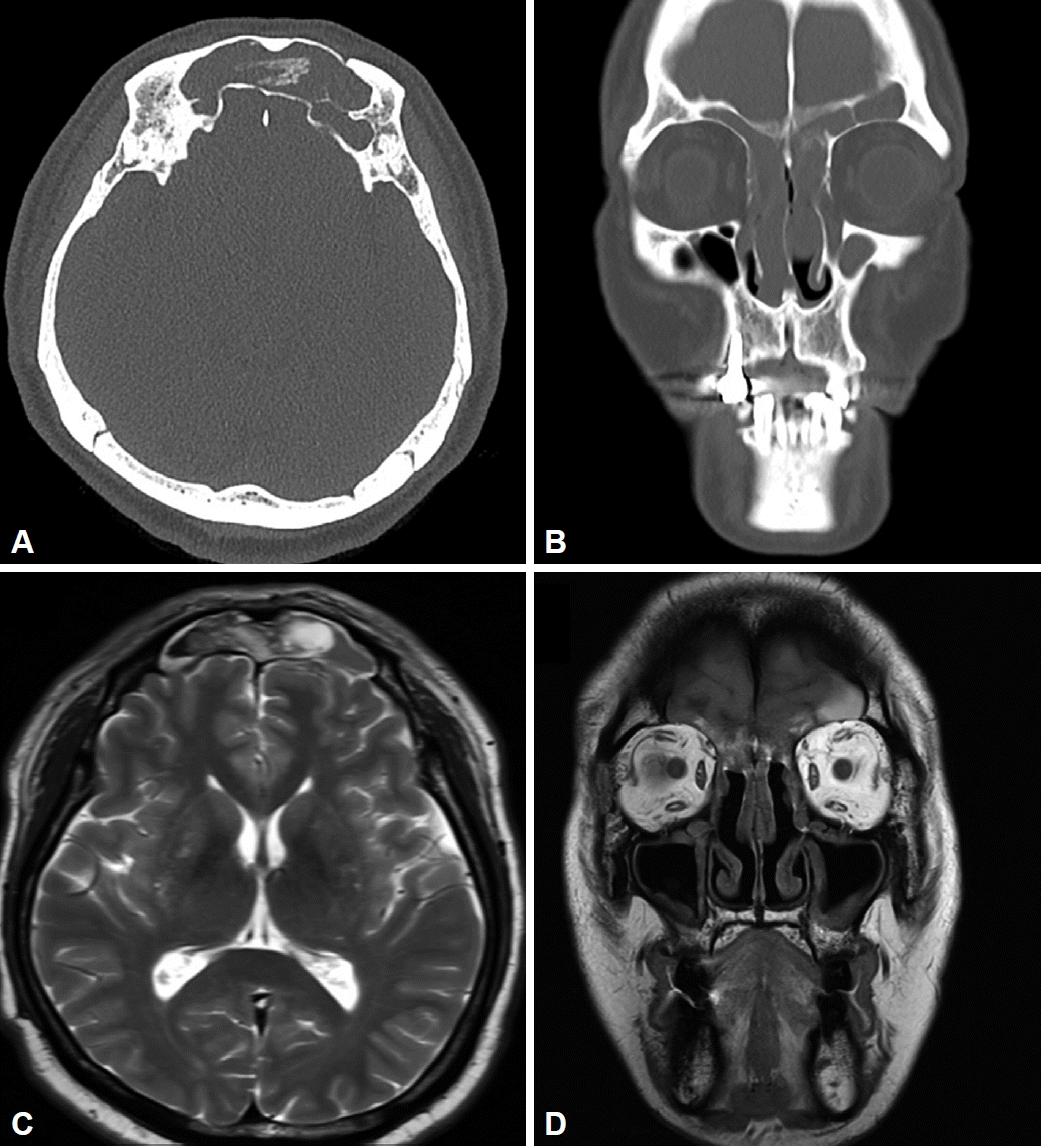
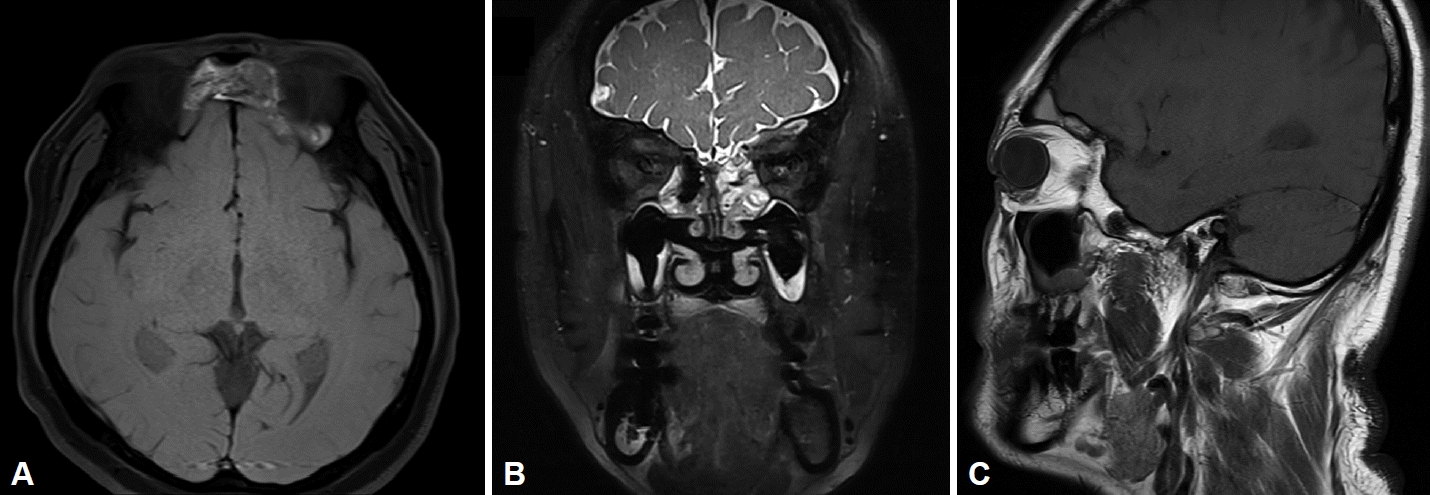
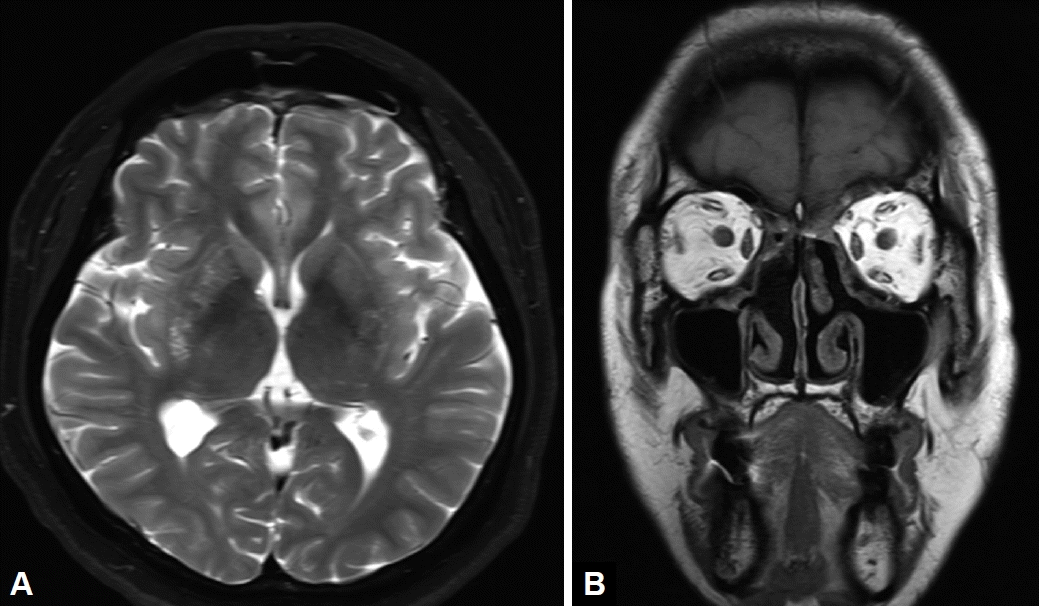
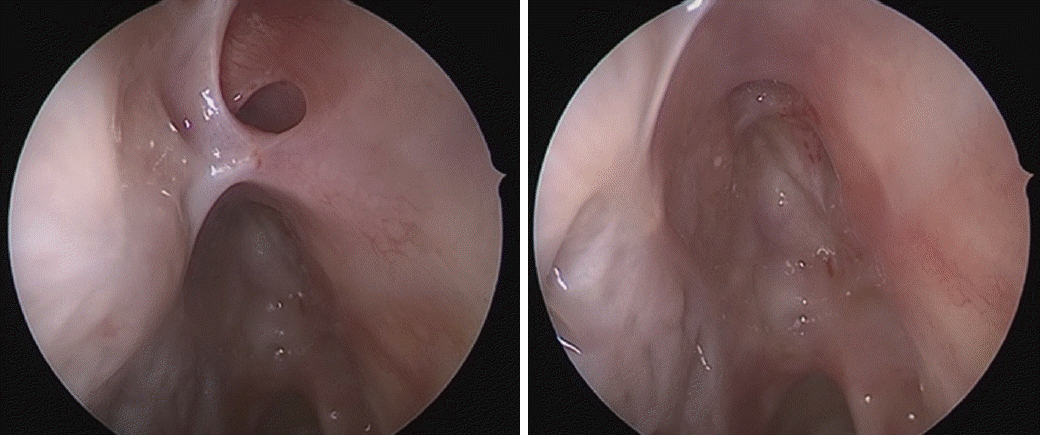
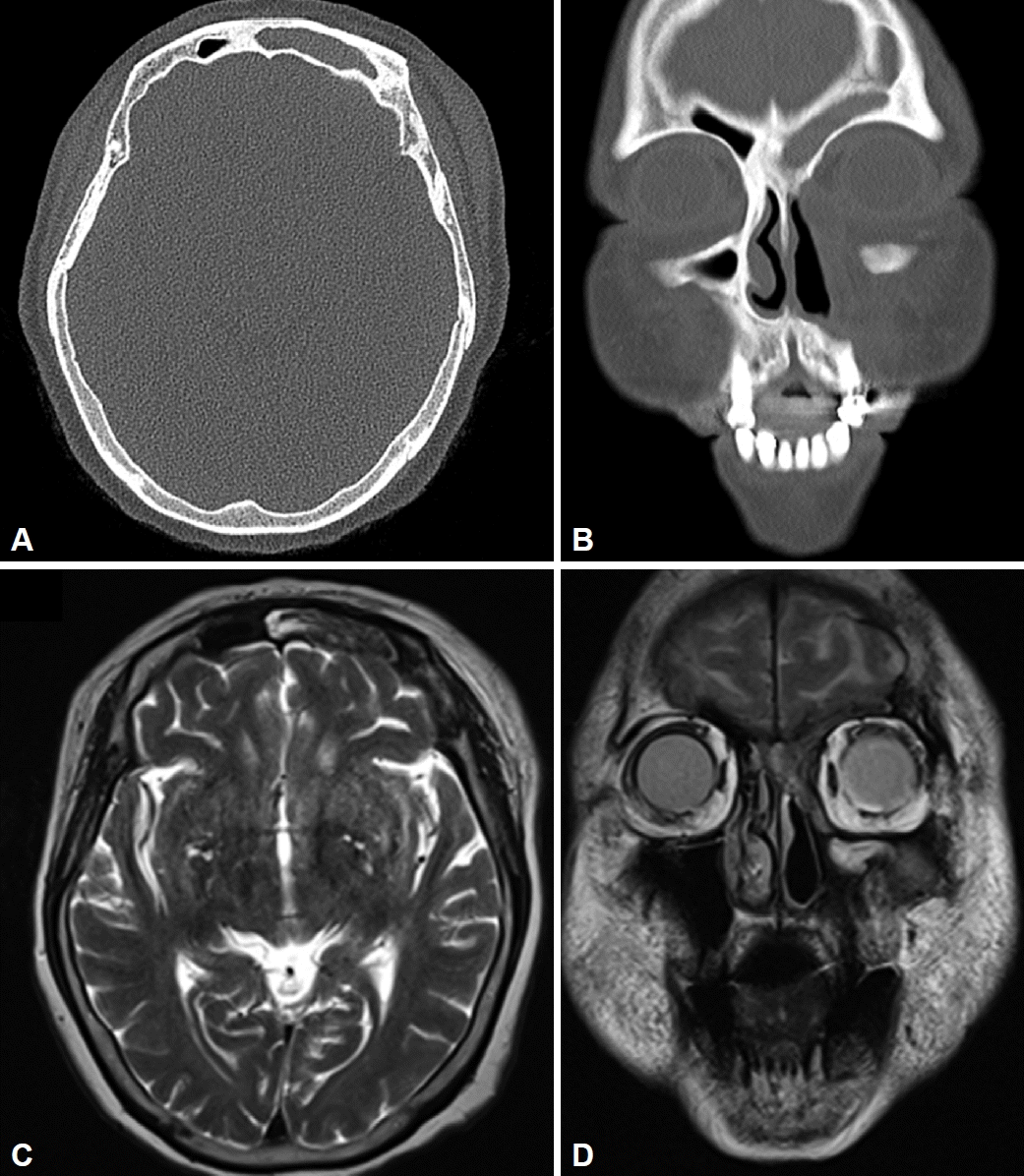
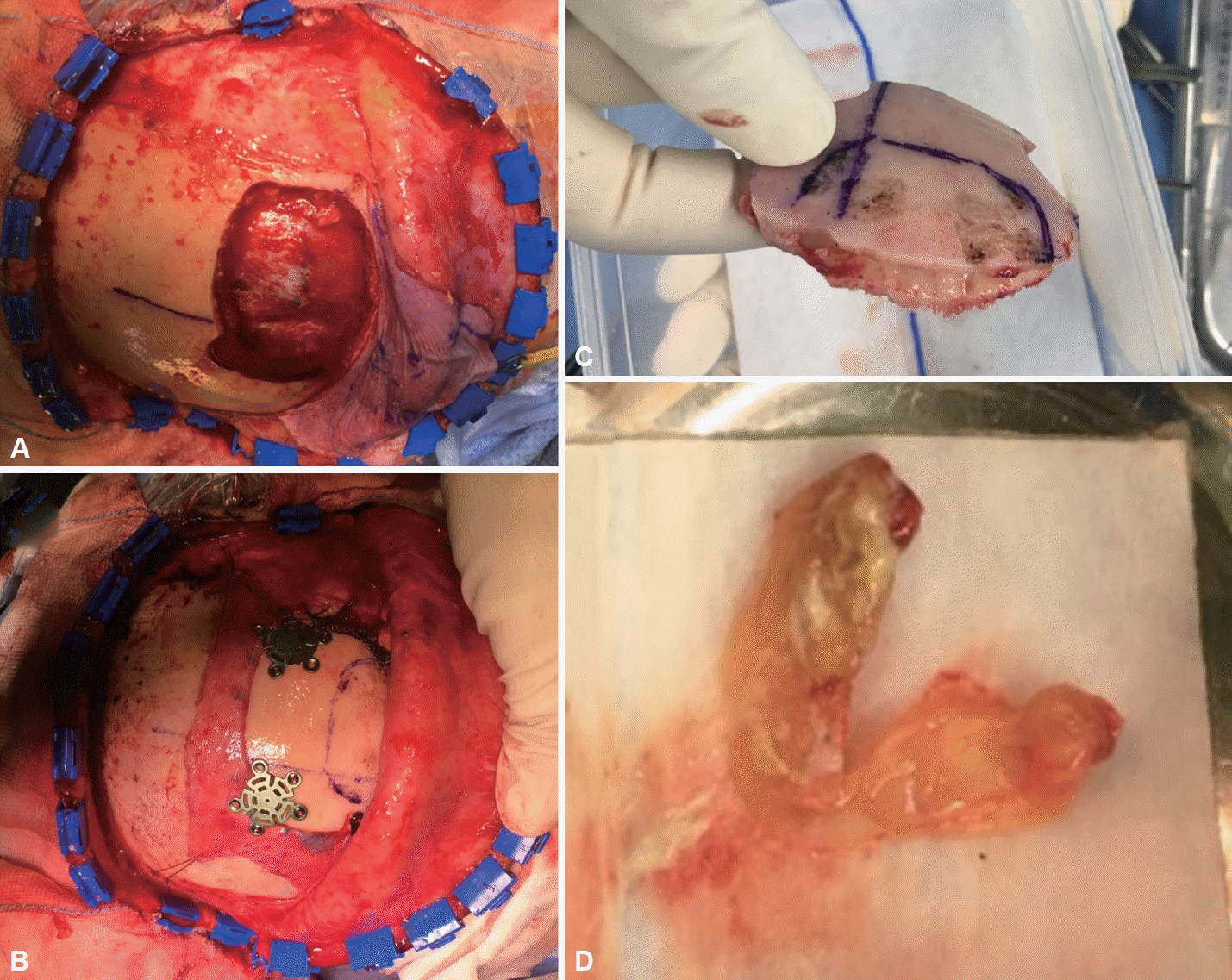
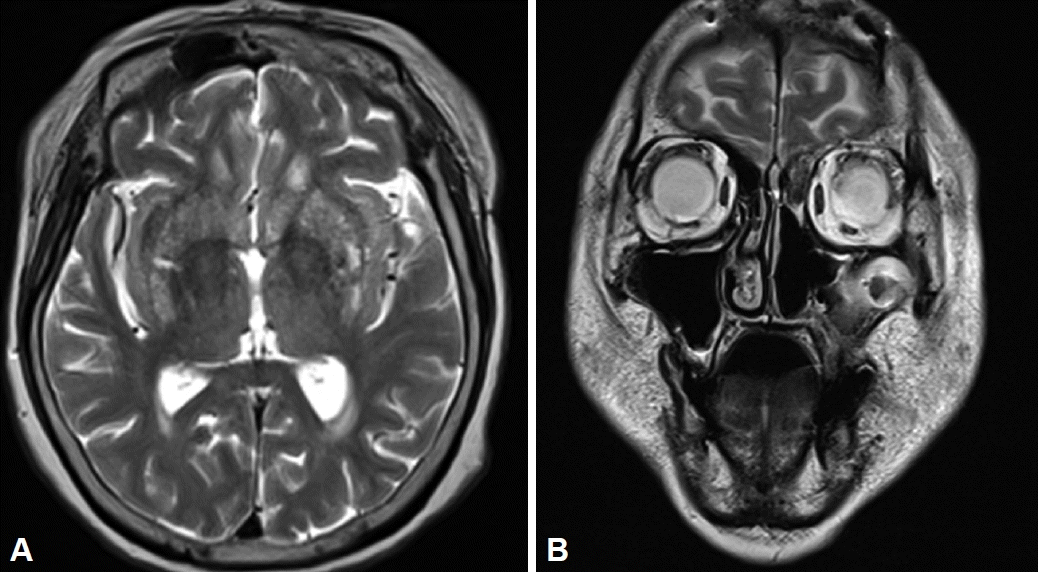




 PDF
PDF Citation
Citation Print
Print



 XML Download
XML Download